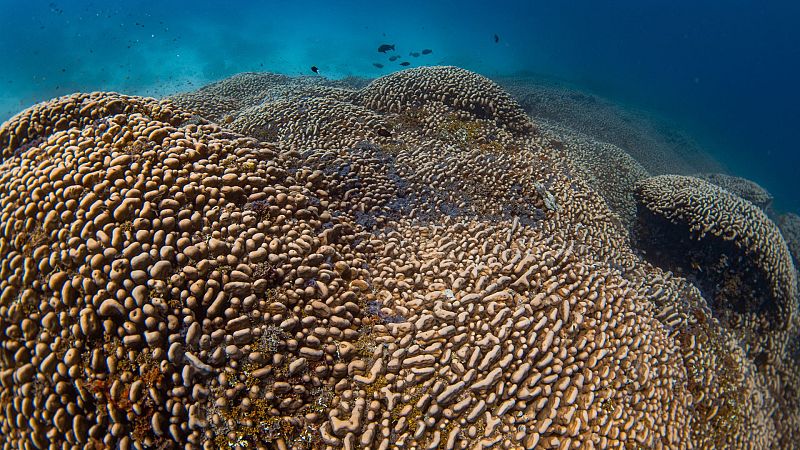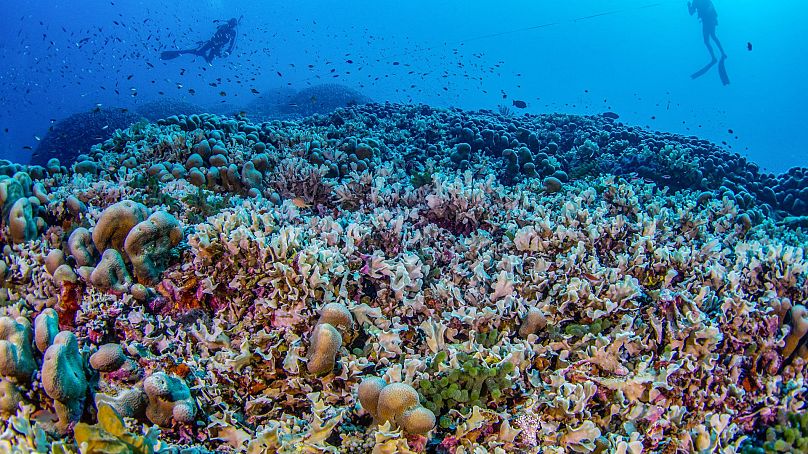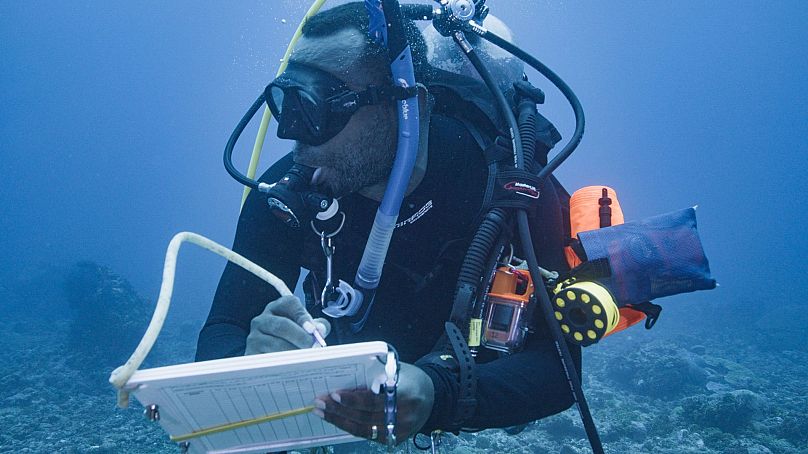‘A beacon of hope’: World’s largest coral discovered in the Pacific Ocean unharmed by global warming

Scientists have discovered the world’s largest coral in the Solomon Islands. Distinct from a coral reef, which is a collection of coral colonies, this gigantic organism is a network of coral polyps.
It measures 34 metres wide and more than five metres high, making it longer than the world’s biggest mammal, the blue whale. It is so huge that it is visible from space.
“Just when we think there is nothing left to discover on planet Earth, we find a massive coral made of nearly one billion little polyps, pulsing with life and colour,” said Enric Sala, National Geographic Explorer in Residence and founder of the Pristine Seas team which made the discovery.
This mega coral, thought to be around 300 years old, is exciting because it could provide unique insights into historical ocean conditions.
How was the world’s largest coral found?
Scientists discovered the huge coral in the southwest Pacific Ocean when they were working from the Pristine Seas research vessel. It’s three times larger than any previously discovered coral.
To the untrained eye, it looks like just a huge rock, but a member of the National Geographic Pristine Seas team dove down to take a closer look and quickly realised it was a mega coral or ‘pavona clavus’.
Interestingly, the local community were unaware of its existence, even though it sits just beneath the surface of the ocean.
“This is a significant scientific discovery, like finding the world’s tallest tree. But there is cause for alarm. Despite its remote location, this coral is not safe from global warming and other human threats,” added Sala.
The research team is living and working aboard their vessel on a months-long expedition that aims to advance ocean conservation by using cutting-edge technology to better understand the marine ecosystem in the Solomon Islands.
The Solomon Islands are well-known for their coral diversity
The oceans around this country boast the world’s second-highest number of species, with over 490 varieties of hard and soft coral.
Like reefs, this type of coral is a haven for marine life, including juvenile reef fish, crabs, and shrimp, which shelter in the coral’s dome-like shape.
“Large adult coral colonies like this contribute significantly to the recovery of coral reef ecosystems due to their high reproductive potential,” remarked Eric Brown, coral scientist for the Pristine Seas expedition.
“While the nearby shallow reefs were degraded due to warmer seas, witnessing this large healthy coral oasis in slightly deeper waters is a beacon of hope.”
Right now, just 8.4 per cent of the earth’s ocean is protected to some degree.
“It is a natural monument that has seen the arrival of the first Europeans to these waters,” added San Félix, who first spotted the coral.
“Illustrious figures of humanity have coexisted with this colony: Newton, Darwin, Curie, Gandhi, Einstein... and it has survived them.”
“It now stores information on how to survive throughout the centuries. The genetic code of these simple polyps is an enormous encyclopedia that has written how to survive multiple climatic conditions, and until now, it does so in the face of ocean warming.”



